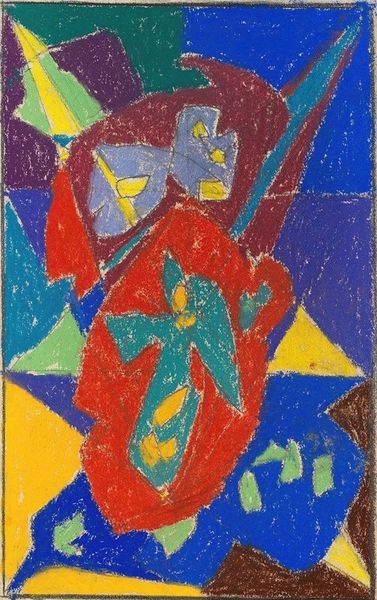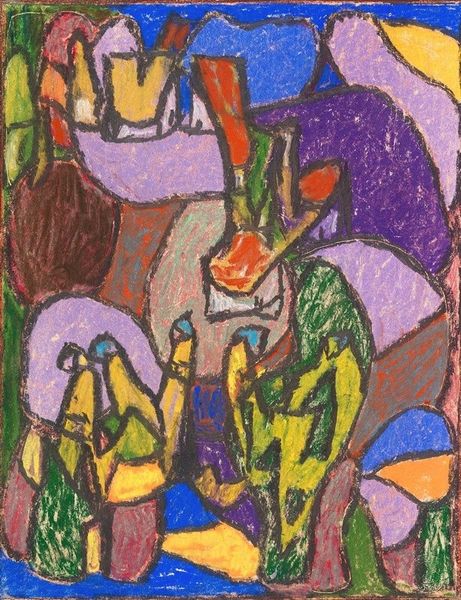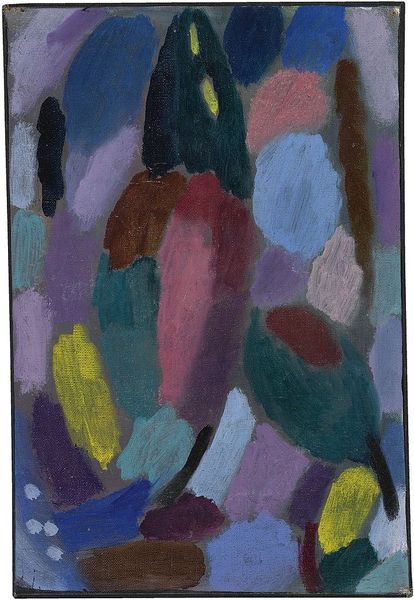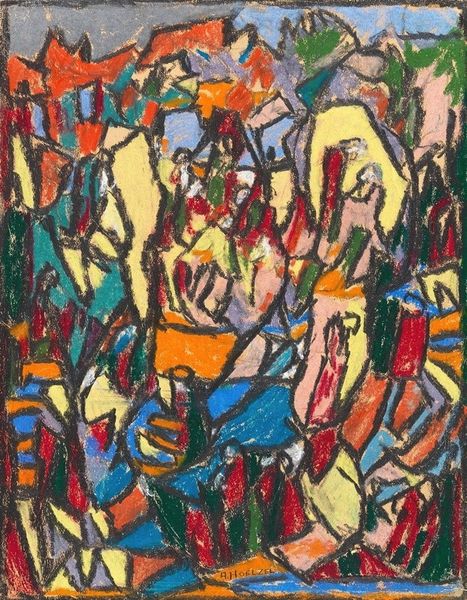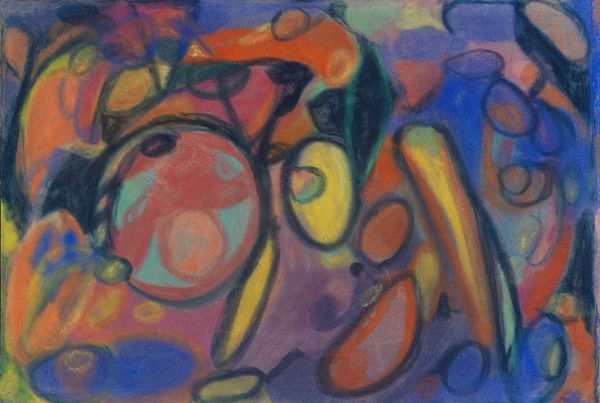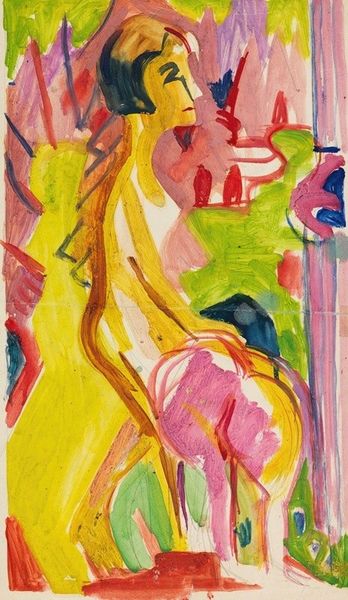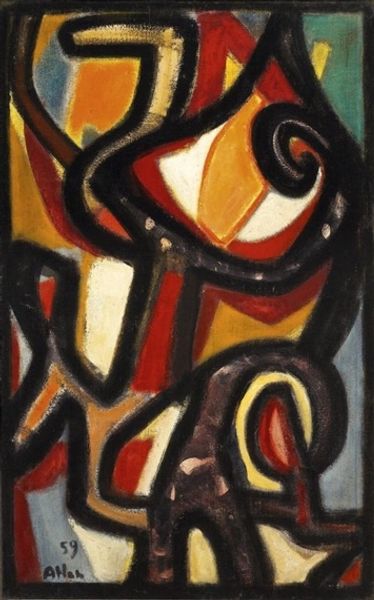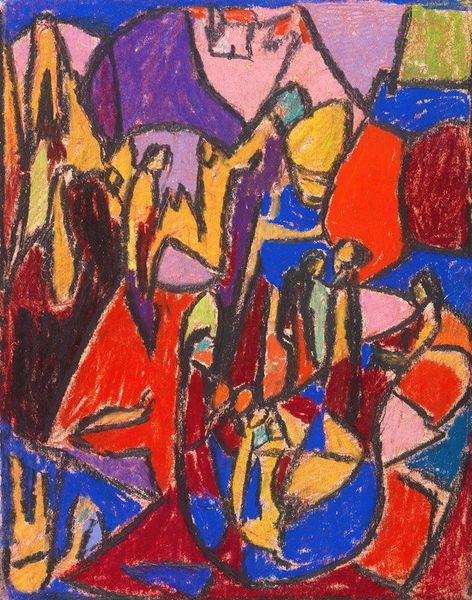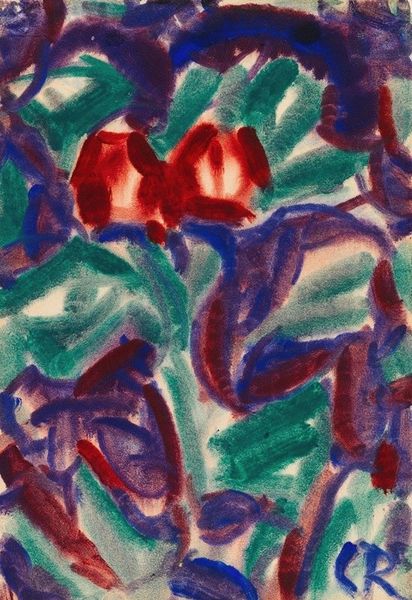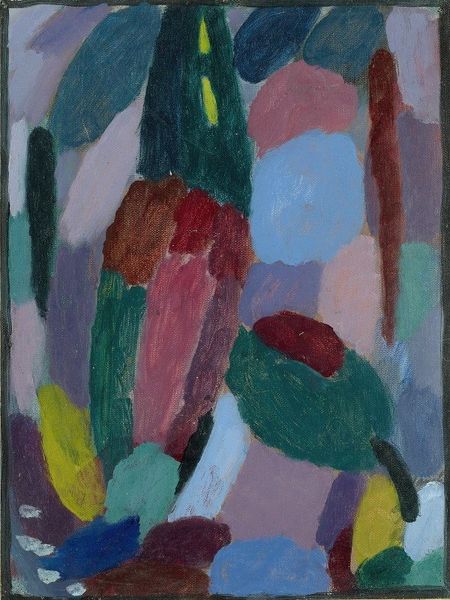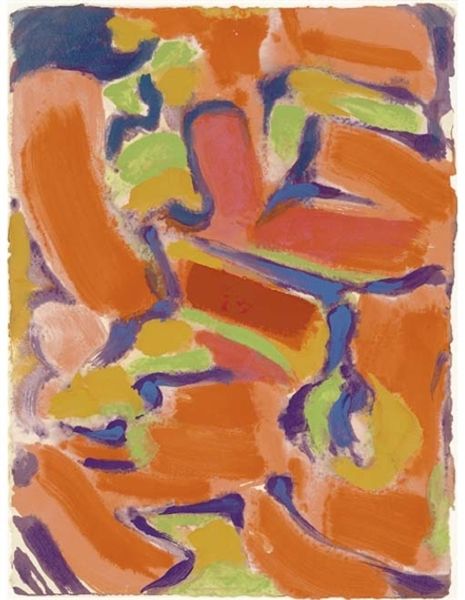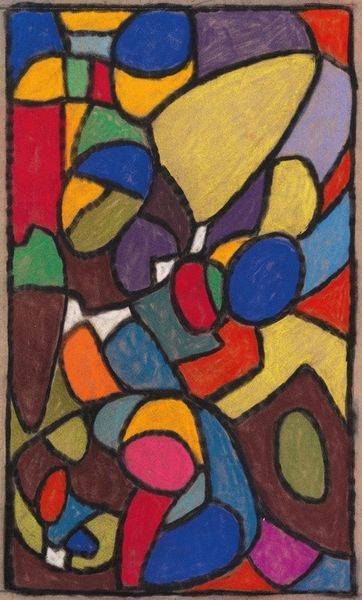
mixed-media, acrylic-paint
#
abstract-expressionism
#
abstract expressionism
#
mixed-media
#
abstract painting
#
colour-field-painting
#
acrylic-paint
#
abstract
#
geometric
#
abstraction
Copyright: Public Domain: Artvee
Curator: Here we have Adolf Hölzel's "Abstrakte Komposition, Hochformat," an abstract composition with a vertical orientation. Editor: It's incredibly vibrant. All these reds, purples, oranges fighting for space – it feels…restless. I can almost feel the textured surface just by looking at it. Curator: Hölzel was quite influential in early 20th-century abstraction. He taught many prominent artists. His theories focused on color and geometric form, as we see here. He saw abstraction as having a spiritual dimension. Editor: I'm curious about the materials. You know, you can really see the graininess; perhaps it is mixed media with either pastel, acrylic paint, or perhaps some sort of crayon. It gives it an almost rough, raw energy, definitely less polished than some other abstract expressionists. Was he consciously rejecting traditional fine art polish? Curator: He sought to purify painting, actually, moving away from representational art toward expressing pure emotion and form. This coincides with early 20th century art criticisms arguing over photography's ability to reproduce accurate depictions which, thus, rendered representational painting unnecessary and even obsolete to some. Editor: Interesting. To me, that rough texture undermines the idea of 'pure' anything. Materials always have a history, right? Pigments have to be mined, binders have to be processed...it tethers the 'pure' emotion to something tangible and real. Curator: Certainly. And it reminds us that even seemingly freeform abstraction is deeply embedded in its time, reflective of artistic manifestos. Consider the institutional pressures, too – what were the exhibition spaces demanding, or perhaps, resisting? Editor: True. The size also informs our viewing of the art. It looks very domestic-scaled rather than for public spectacle, inviting intimate inspection. Was that typical? Curator: For his earlier works, yes. He later transitioned to larger formats more typical of public displays during his appointment at the Stuttgart Academy. This shift mirrors how abstract expressionism came to be associated with notions of American freedom during the Cold War. Editor: So, even something as seemingly free as abstract art is always working within constraints, political landscapes, and physical limits of material. Thanks, looking at the production that went into making this image opened my mind and expanded how I saw the final artwork. Curator: Exactly. Thinking of the painting as both an aesthetic object and a product shaped by various forces enriches our viewing experience and illuminates the socio-political contexts from which artwork is made.
Comments
No comments
Be the first to comment and join the conversation on the ultimate creative platform.
